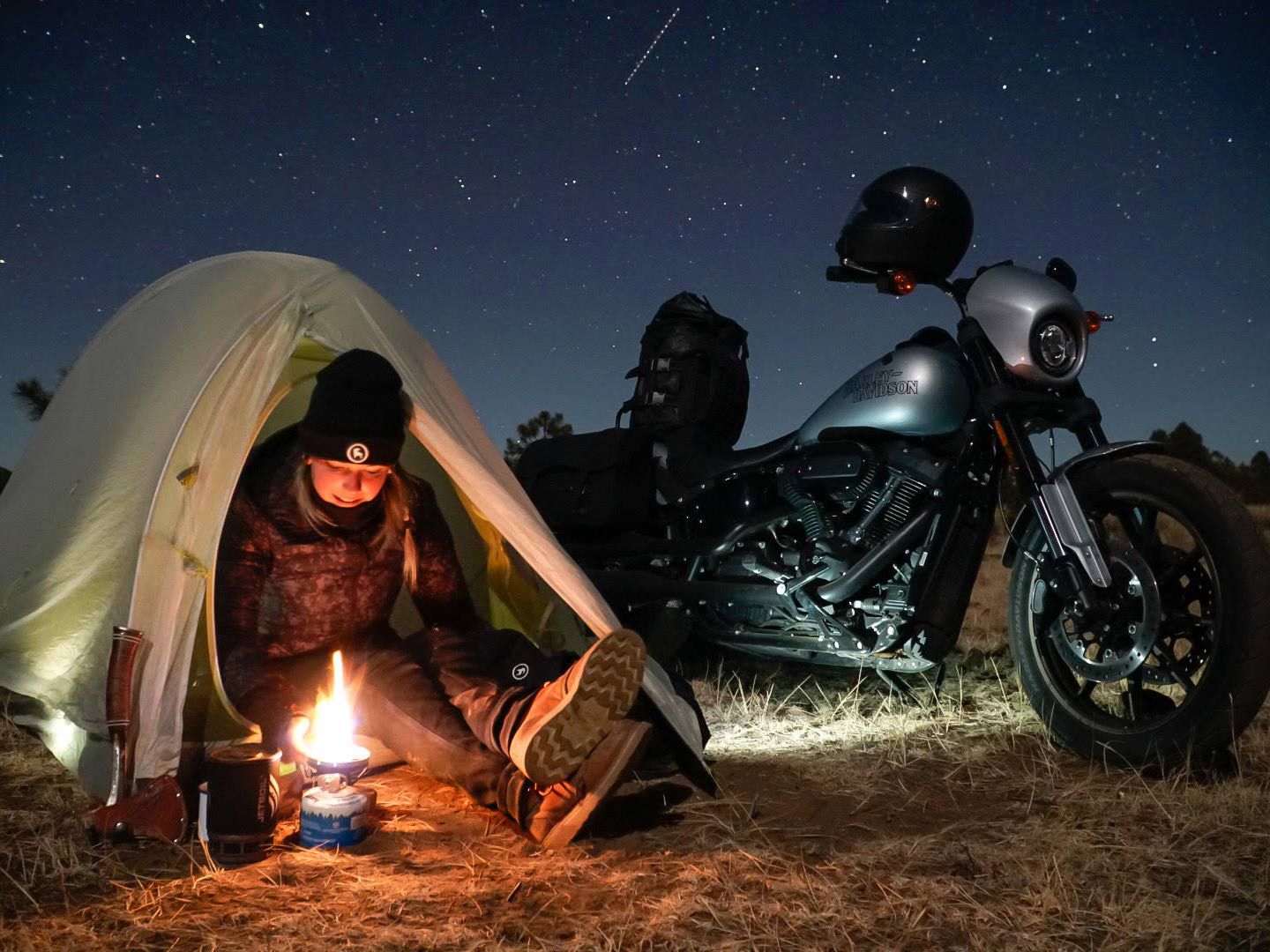
Have you seen those kitschy signs that say something like “The worst day fishin’ is better than the best day not fishin’”? Well, the same thing could be said for riding motorcycles, especially when you’re out exploring epic roads and landscapes you’ve never seen before.
What if there were bad days, hypothetically, while traveling by motorcycle, what would they be like?
I was recently asked this question by a friend I hadn’t heard from in a long time—out of the blue. He shared how the looming shadow of this particular inquiry has kept his dream of a round-the-world motorcycle trip tucked securely away in his garage.
First off, it takes a discerning mind to look beyond the plethora of media depicting idyllic landscapes and “best moments” shared from road trips. I commend the ability to be enraptured by excitement and still possess the capacity to see past it, peering deep into the grease-covered folds, searching for the grit in a pile of glitter.
Riding around the world isn’t all sunsets and open roads, otherwise more people (time and finance willing) would do it. But maybe the hard moments are the specks of gold in the pan, swirling around with the bulk of beloved dirt. Perhaps the shimmer is in the eye of the beholder—the rain-sogged, dirt-encased rider—or maybe time is what gives it its glimmer.
Related: The Problems of Motorcycle Travel No One Talks About
Of course, the answer isn’t so simple. As I moved to respond to my old buddy’s question, a kaleidoscope of challenging times flashed through my mind, with complex emotions attached to each memory. Looking back, those flashes of color did not represent fun moments, and I know you may be picturing a run-of-the-mill scene, broken down on the side of the road in exceedingly poor weather, but that’s only part of the story.
So if you’re ready to diverge away from the shiny, influential side of motorcycle travel, come with me into the dilapidated, cobbled-together reality of discomfort, fear, and roadside dismay. Let’s swerve into some everyday tips and a few unforgettable, first-hand accounts from fellow travelers to cast a flickering neon light into the dingy, abandoned garage that makes up the “bad days” of motorcycling.
After all, who doesn’t love a story of grit, of Mad Max’s Fury Road, of perseverance against all odds, clinging to hope and of better days to come. Perhaps these stories can show the way if someday we need a faint glow of new beginnings on our own motorway horizon.
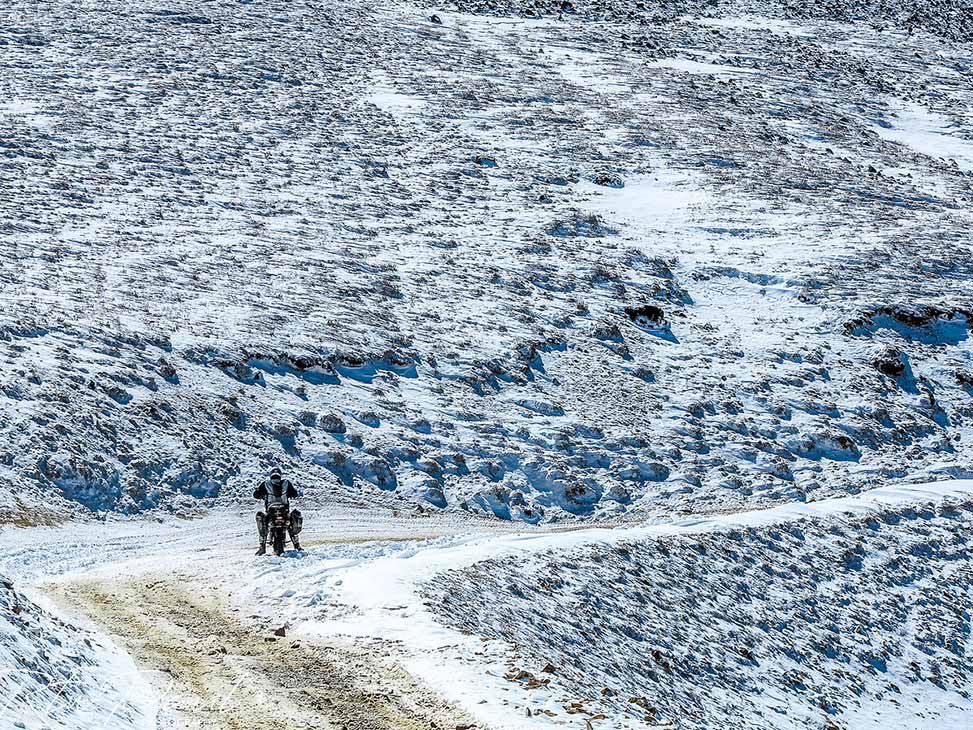
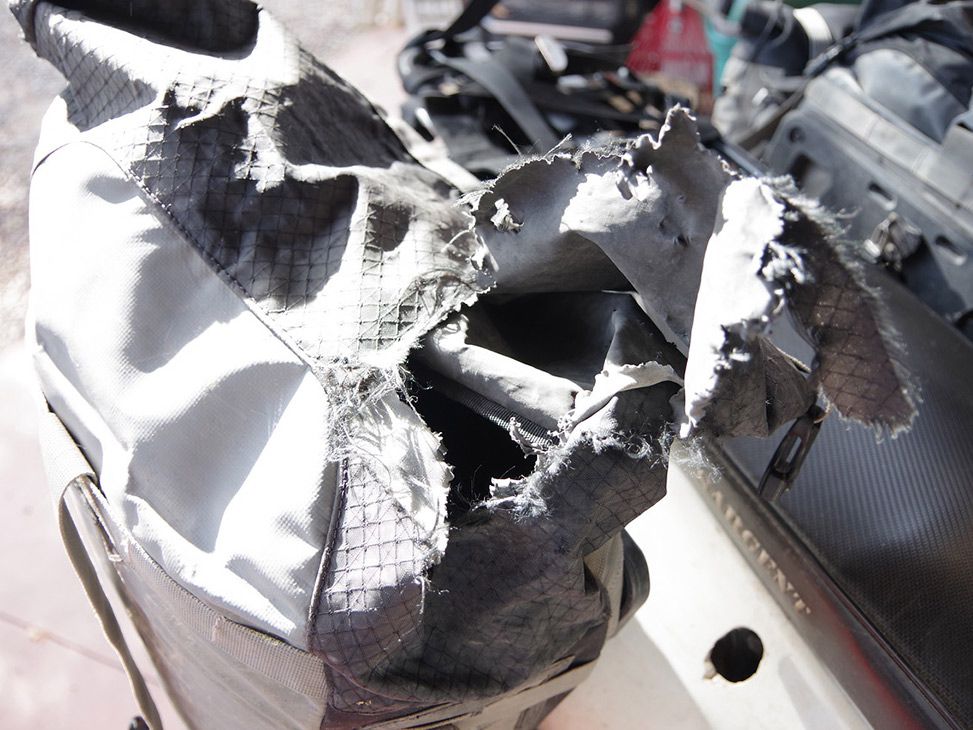
All the Same, It’s Not Like You’re Being Attacked by Bears, Right?
Motorcycle: Suzuki DR650
Rider: Paul Stewart
Region: Ouray, Colorado
Hazards: Wildlife
When Paul Stewart, aka rtwPaul, returned to his campsite a few miles outside of Ouray, Colorado, he was surprised to see a second tent pitched not even 10 feet from his.
“I turned off my motorcycle and all I heard was snoring. Really, really loud snoring…even the noise of my bike hadn’t woken him! It seemed that the entire rest of the campground was empty. ‘Why did he put his tent right there?’ I mused, as I listened to the snoring getting louder and louder.”
After a long day of riding, including being hit by a blizzard on Engineer Pass and a late dinner reunion with friends, Paul ceded to his neighbor’s incessant “log sawing,” shoved in a pair of earplugs, and went to sleep.
Not long after, however, he awoke to a raucous yelling right outside his tent. Paul unzipped the tent door to see the once-snoring, now-bewildered man standing, shouting “look!” while pointing to the nearest grove of trees. Following directions, Paul’s light shone on the rear end of a 400-pound black bear casually ambling away. Apparently the bear had knocked over Paul’s DR650 and was standing on top of it, ripping into his Mosko Moto soft luggage bags. The thing was, Paul knew this was bear country and had taken precautions, stashing his food items in a nearby cabin for safe keeping. What attracted the bear to the bags then? An overlooked, 4-inch section of cucumber. On the cusp of winter, apparently this 95 percent water, botanical fruit is a worthwhile endeavor to a bear desperate for nutrients to see them through the season.
TIP: Beyond leftover stashes of cucumber, bears are attracted to petroleum products in general, including gas, oil, and grease. Therefore, if you’re motorcycle camping out in bear country, do your best to remove what you can that will attract bears, but for the rest, be on the lookout and aware that bears are a real possibility. Visit bearsmart.com/live/managing-attractants/ to increase your bear aptitude.
Related: Best Motorcycle Riding Traffic Safety Tips
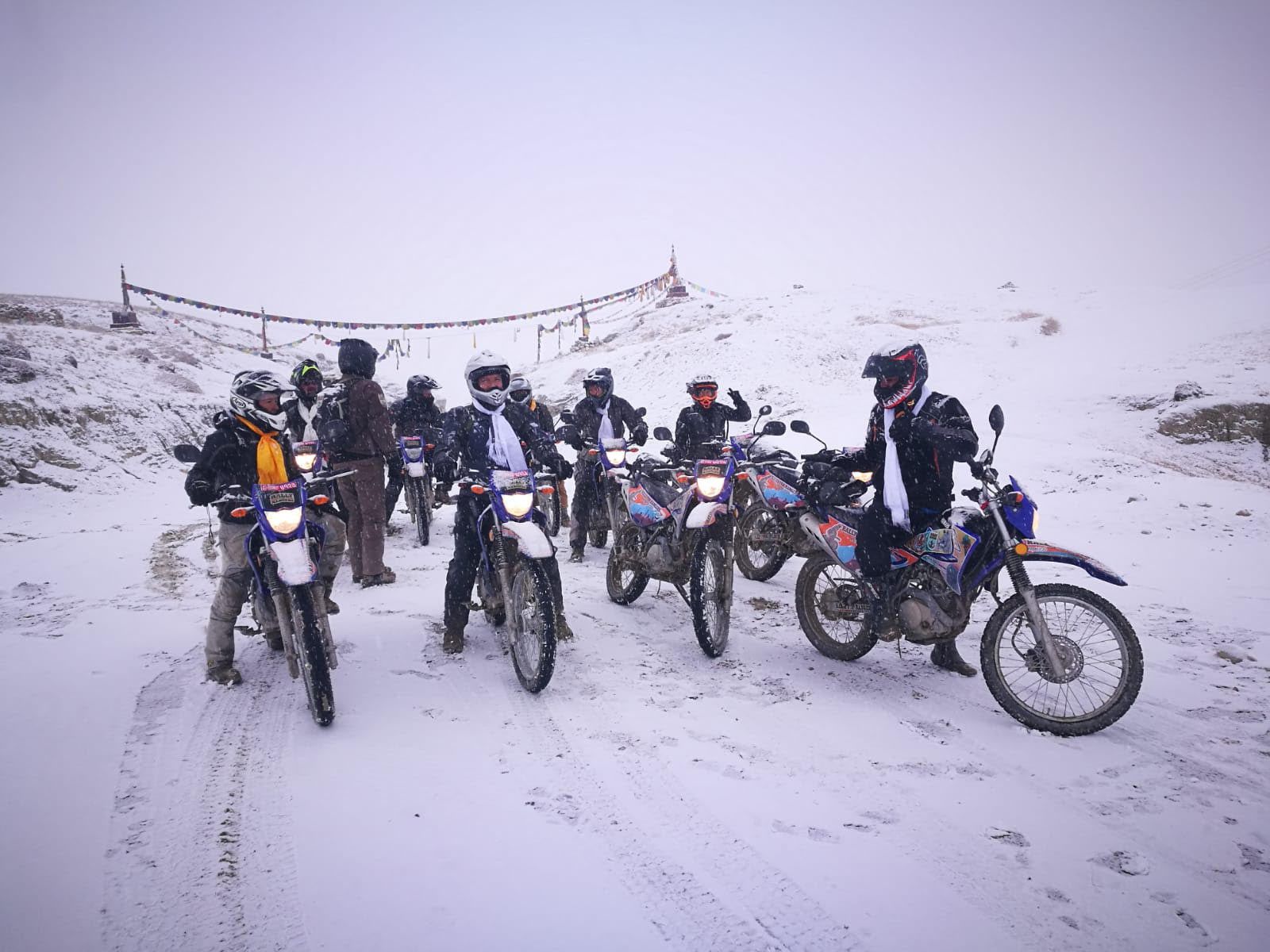
Uncomfortably High
Motorcycle: Yamaha XTZ125
Rider: Tom Medema
Region: Nepalese Himalayas
Hazards: High altitude, exposed roads, “blinding blizzard,” guest riders
It’s one thing to find yourself in a sketchy situation, but it’s entirely another when you’re guiding—and therefore responsible for—a group of riders, especially once things take an unplanned turn for the worse. Situated at 15,000 feet near the border of Tibet, the precarious, cliffside roads leading to the remote jungles of Chitwan in Nepal are dangerous enough, but when a light snowfall turns into a blinding blizzard as you begin the descent—something is surely hitting the fan.
Riders of Rally for Rangers, a nonprofit organization that delivers motorcycles to park rangers to enable them to better protect wildlife in vast areas of land from illegal hunting and trafficking, found themselves in a total whiteout, “with not a tree or shelter in sight and no way to discern rocks in the trail, the foot-deep silt washes that swallowed us on the ascent, or the precipitous edge of a narrow mountain track. Extremely exposed roads, zero visibility, and choking, carbureted 125cc bikes at altitude created uncertainty and anxiety at best, abject fear at worst.”
This impressive storm blindsided them as they took part in delivering these 15 Yamaha XTZ125s to the park rangers of the Chitwan National Park in Nepal, a biodiverse region threatened with habitat destruction and wildlife poaching. Founder Tom Medema says that the tenacity and grit of the riders and guides got them down safely, with an adventure story to tell for the rest of their lives.
TIP: Sometimes bad weather is unavoidable, and occasionally there is no escaping it and no respite. When these situations arise, the only move that matters is your next one. Staying calm and doing your best to not get injured is the only way to get through it. Maintaining a sense of humor is not just a major bonus, but also a quality of expert survivalists.
Related: Motorcycle Riding Tips – Touring During COVID Pandemic
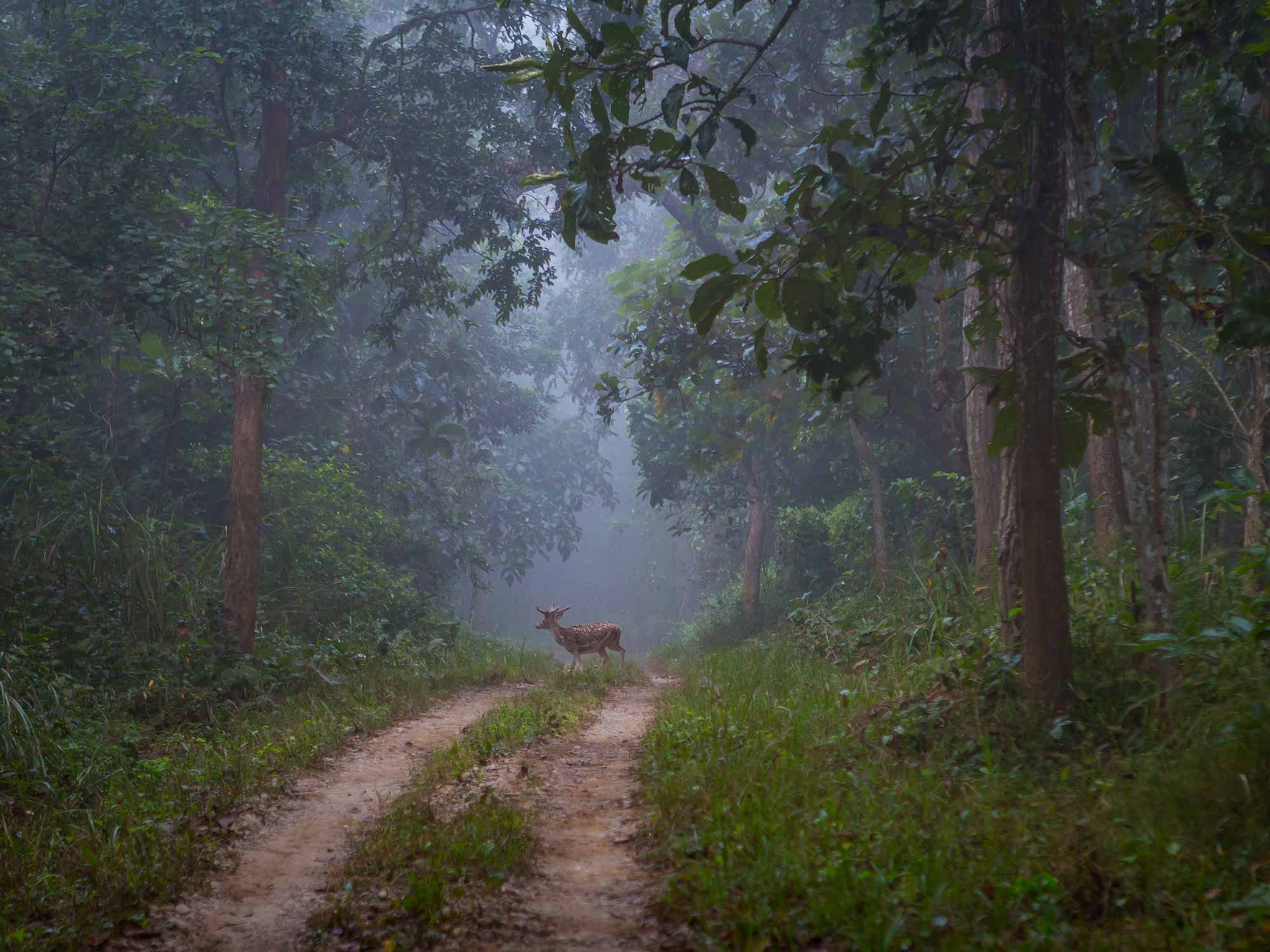
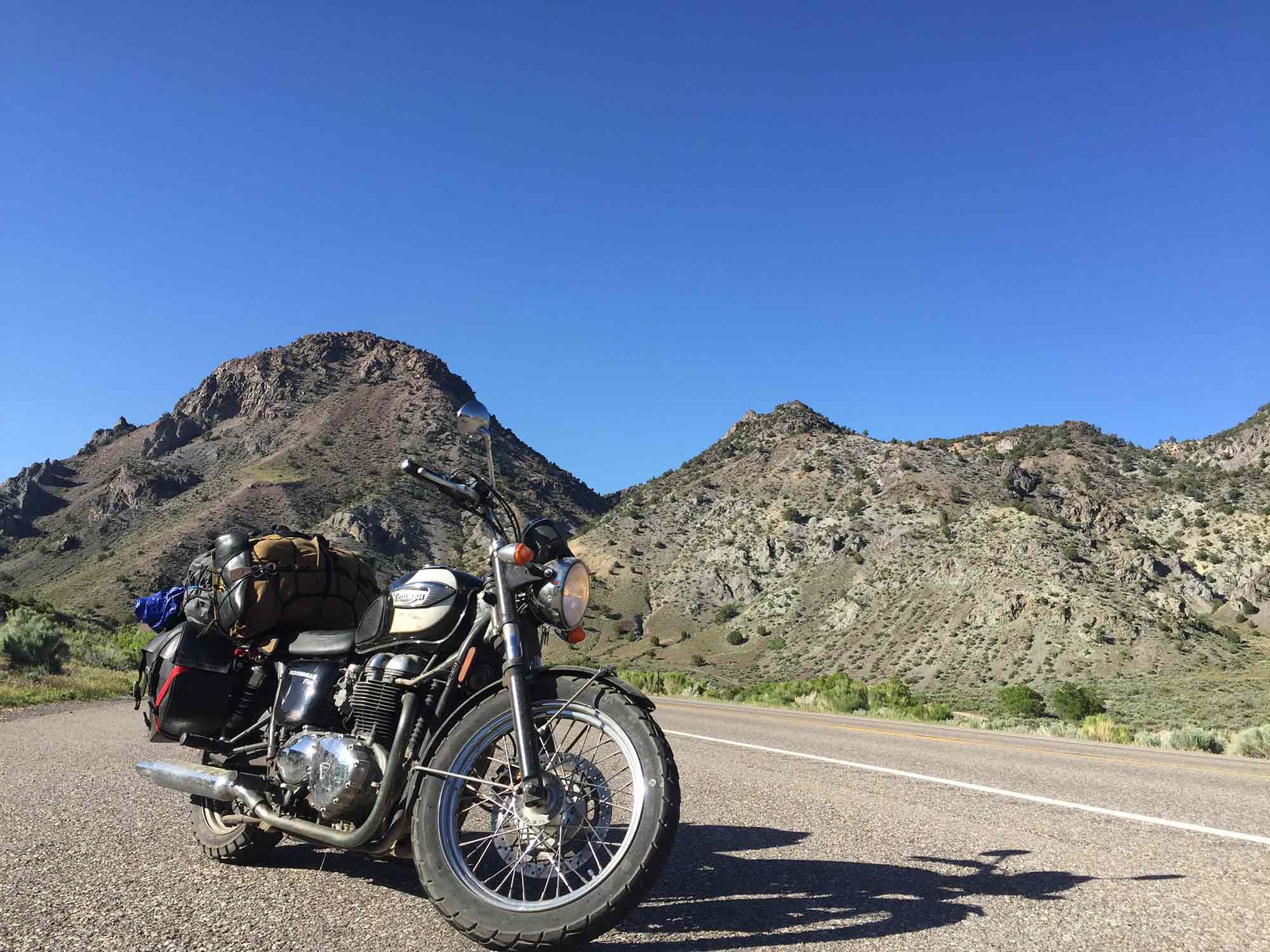
“This Might Be It… I Might Die. And I Just Had to Keep Going.”
Motorcycle: 2006 Triumph Bonneville 790cc
Rider: Ledvi Beza
Region: Missouri
Hazards: Night travel, rain, inexperience
“I kept thinking, this might be it… I might die. And I just had to keep going.”
On her first motorcycle trip across the country, while riding solo, Ledvi fell in gravel, pinned by the weight of her packed Triumph Bonneville. She yelled in hopes that someone on that lonely forest road would hear her cries for help to lift the bike off of her. With her ankle in great pain, she did the best she could by tying her boots tightly at the ankle and continued on, praying that it would be OK. Riding through a narrow, dark highway at night in the rain with semitrucks passing her, she kept thinking each moment might be her last.
“They might not see me, or the splash or the wind from the truck might knock me over into the construction zone. I might die. And I just had to keep going. When I arrived, it was still raining but I couldn’t move my leg to put my kickstand down. I just straddled my bike, shaking in the rain for like 10 minutes before I could move.”
TIP: Ledvi wishes that she had more experience riding under her belt before attempting a solo trip across the US, as she had only been riding a couple of years before embarking on this journey.
Related: Top Motorcycle Safety Tips From A Solo Female Adventurer
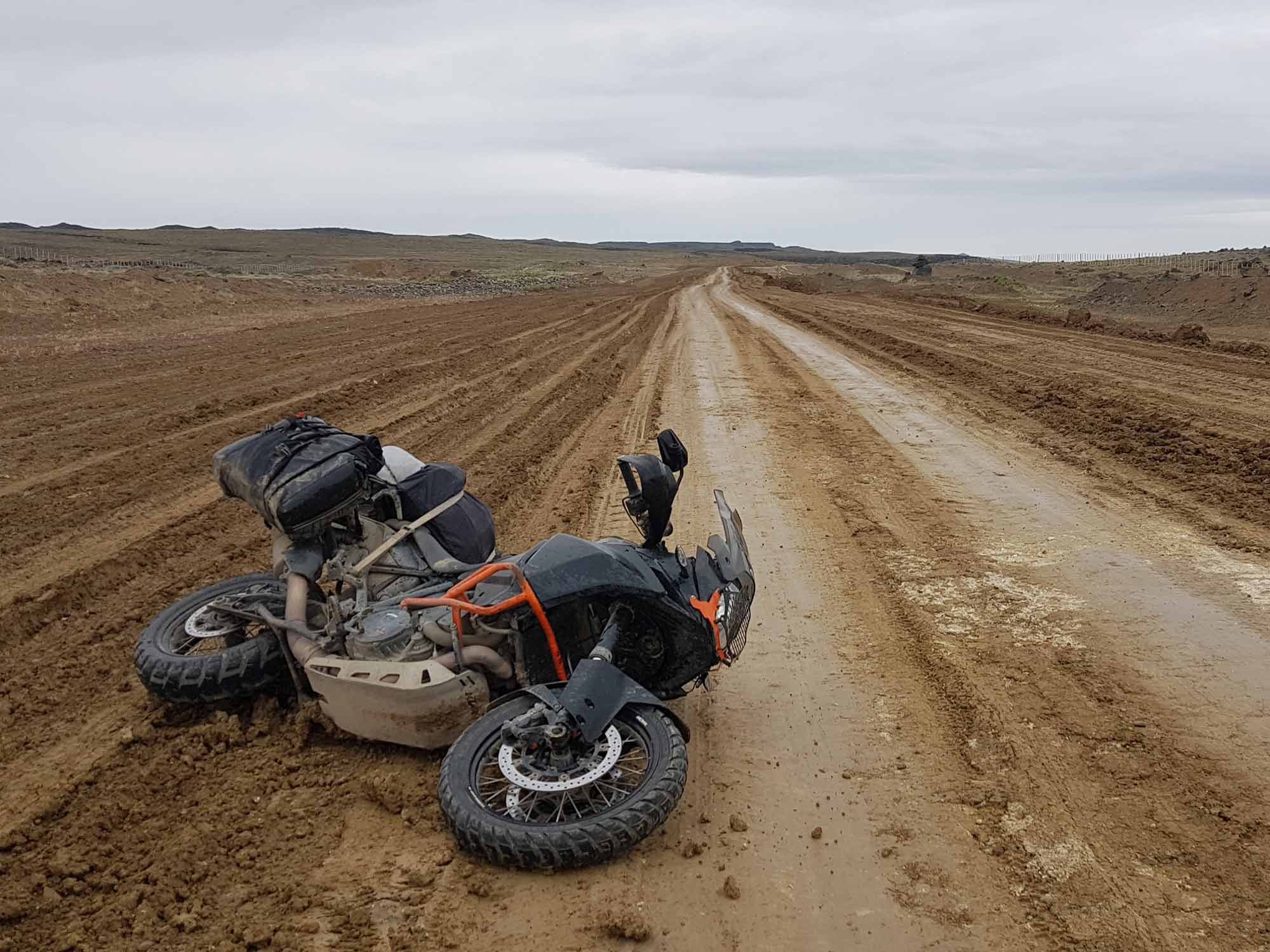
KTM 1190 Adventure and the Terrible, Horrible, No Good, Very Bad Day
Motorcycle: KTM 1190 Adventure
Rider: Paolo Cattaneo
Region: Patagonia, Argentina
Hazards: Unexpected ice, road construction, rain
On a remote stretch of Patagonia’s Ruta 40, in the cold, autumn rain, a lone rider waits in line to fuel up at the only gas station in town, with no shelter as it begins to pour. The rider, Paolo, watched in incredulity as time seemed to slow down, entering into an alternate reality where the faster the rain fell, the slower people moved. This slow-motion dimension took place under the shelter of umbrellas and inside cars as Paolo sat on his motorcycle, getting completely soaked in real time.
“While I was waiting for my turn, thinking about how I was going to refuel without letting water enter my fuel tank, the car in front of me oddly left without filling its tank. The operator approached me and told me that they ran out of fuel.”
The only option for fuel was 50 kilometers (31 miles) south, going back the way he had come, to the previous town. Funny enough, yesterday, it had been an amazing, sunny day out on the road, and Paolo’s chipper disposition had carried over into the morning, until it was trampled on, one misadventure at a time, as if by an ambling herd of Patagonian sheep.
Along the way, the rain subsided but with drenched gear, the wind kicking up, and temperatures hovering around 2–3 degrees Celsius, the cold chilled to the bone. Finally on his way north, beyond the fruitless gas station, Paolo noticed some messy terrain coming up fast and assessed the shiny, compressed dirt tracks left behind by 4×4 vehicles as the best path through it. Hitting one of the tracks, tires started to spin and, lo and behold, the shine was ice. Paolo lost control and was thrown from the bike at around 60 kph, landing directly on his back, smacking the back of his head on the ground, flinging chunks of mud every which way, and the 300-kilogram (661-pound) beast was on its side. Startled, filthy, but unhurt, Paolo picked up the bike and lumbered on.
Related: Motorcycle Touring In Colombia—Crossing The Trampoline Of Death
The going was slow. After a torturous 70-kilometer (43-mile) slog through the frozen mud wasteland, he was on tarmac again, but relief was fleeting as Paolo quickly noticed a strange feel and terrible smell to his bike.
“I stopped to check what was going on and realized that the head seal of my rear shock had given up on me for the very first time after 85,000 kilometers (about 52,820 miles). The oil, coming out from the cartridge, was black and leaking all over the exhaust, creating a funky smell.”
Out in the cold wilderness, Paolo had no choice but to push on, bouncing along on his rear shock like an inflatable castle, but without the glee. You’d think this would have been enough in the sequence of unfortunate events, but alas, Paolo came across another rough section which seemed to be freshly grated by an extraordinary quantity of small black rocks. The pebbles (he believes they must be the bits they’ll use to pave the road) were so deep that his front tire struggled to push through them.
Then things went downhill…literally. The descending slope made the deep pile of pebbles unrideable, with his front wheel sinking all the way in. Paolo and the bike went down, with his foot trapped underneath the bike.
In desolation, with not a soul around, it began to rain again (of course). Try as he might to lift the bike off of him while laying on the ground—with just his arms—the bike didn’t budge.
So he began to dig. Creating space underneath his foot, which was well protected by his riding boots, Paolo was able to free himself. He stood up and evaluated the situation: The bike was lying diagonally down the slope of a large mound of those cursed little black pebbles, extremely difficult circumstances to pick up a large bike.
Where to start? First, he dragged the front wheel to situate the bike in a perpendicular position to the slope to ease some of the weight from it. Putting the kickstand down was not an option, due to the pebbles, so it was a bit of a balancing game to get on the bike to a point where Paolo could mount it.
With a bouncy bike and a broken spirit, Paolo, just as most motorcyclists, had no choice but to keep going.
Finally, making it to a town for gas and a break to revive his morale, he mustered up the will to push on a bit further. Leaving the town, he got a flat rear tire and decided that was the final sign he needed to call it a day.
TIP: Most days are truly glorious on a motorcycle, but you can’t win them all. In sufficiently cold temperatures, anticipate shine to mean “ice,” gear up for the slide not the ride, and practice lifting your bike so that you feel confident you can do so when the time comes.
Related: Northern Colombian Treasures—Motorcycling The Sierra Nevada de Santa Marta With A Purpose
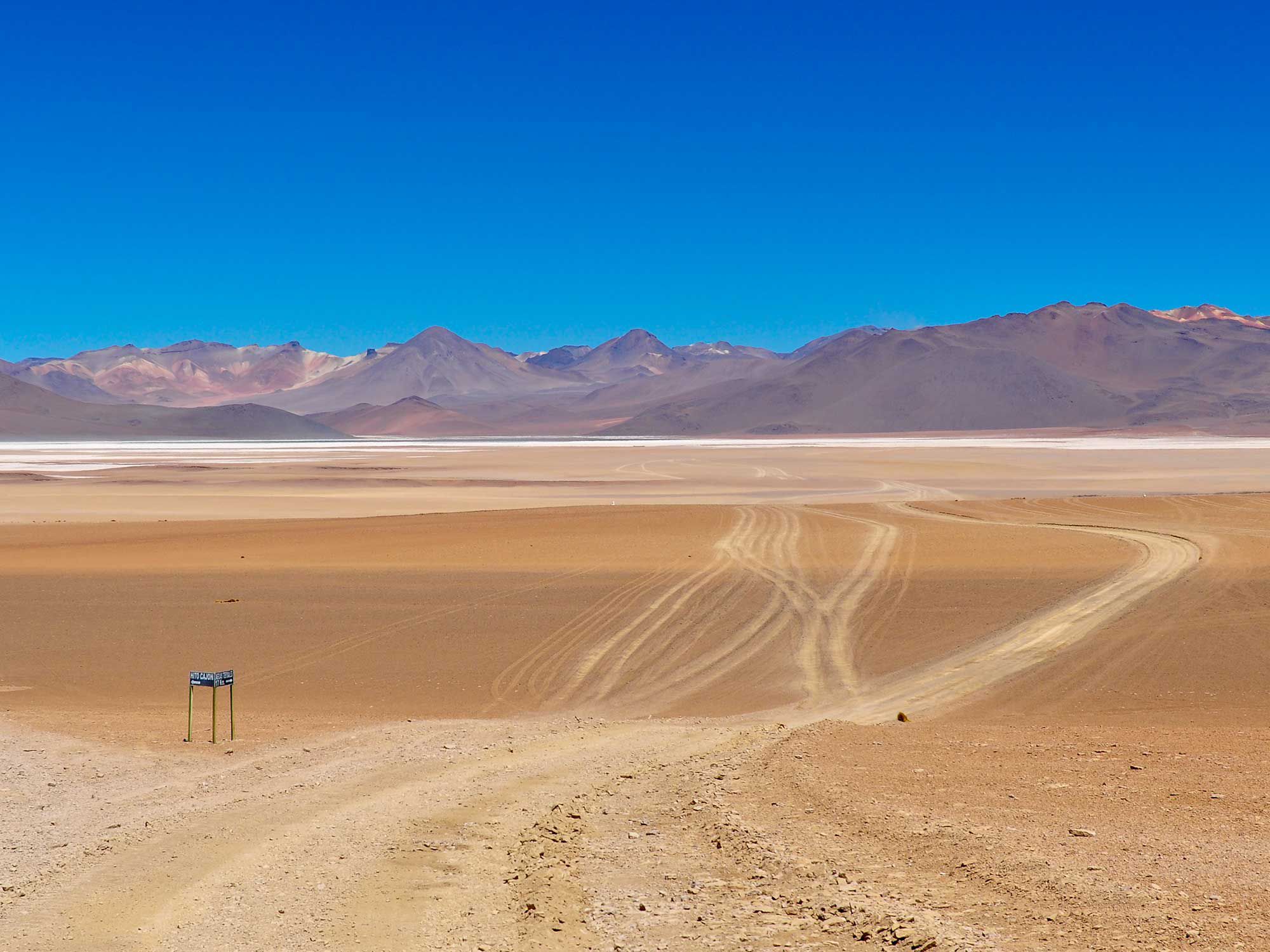
Lost in Bolivia
Motorcycle: KTM 950
Rider: Laurie Osborne
Region: Bolivian salt flats
Hazards: High altitude, corrosive salt, deep sand, guest rider
“We labored on, narrowly avoiding catastrophe as the paths disappeared, covered by orange sand. We stopped, searching in the moonlight, but could not determine where we had come from or where the road might resume. We were lost. Using the mountains as landmarks, we slowly made our way in the direction we had come from. Would we have enough gas to make it all the way back to civilization and medical help? The jury was out.”
After checking the Bolivian salt flats off their bucket lists, rider Laurie Osborne and his girlfriend (and cat, named Cheeks) joined forces with another couple they had just met for the next high-altitude leg of their adventure through the Ruta de las Lagunas. A buddy had described this route’s brightly colored, flamingo-filled lagoons amidst snowcapped volcanoes as the highlight of his entire Pan-American trip. With high expectations, the troop of four decided to ride together the next morning after breakfast.
Plans first started to fall apart when the boyfriend delayed the start of their journey by heading out on a solo impromptu ride, showing up hours later covered from helmet to tires in a fine white dust, a layer of corrosive salt infamous for wreaking havoc on electrical systems, expensive exhausts, and components like wheel bearings. At long last, after a full rinse, they hit the road with just four hours of daylight left.
Related: Top 10 Most Motorcycle Travel-Friendly Countries
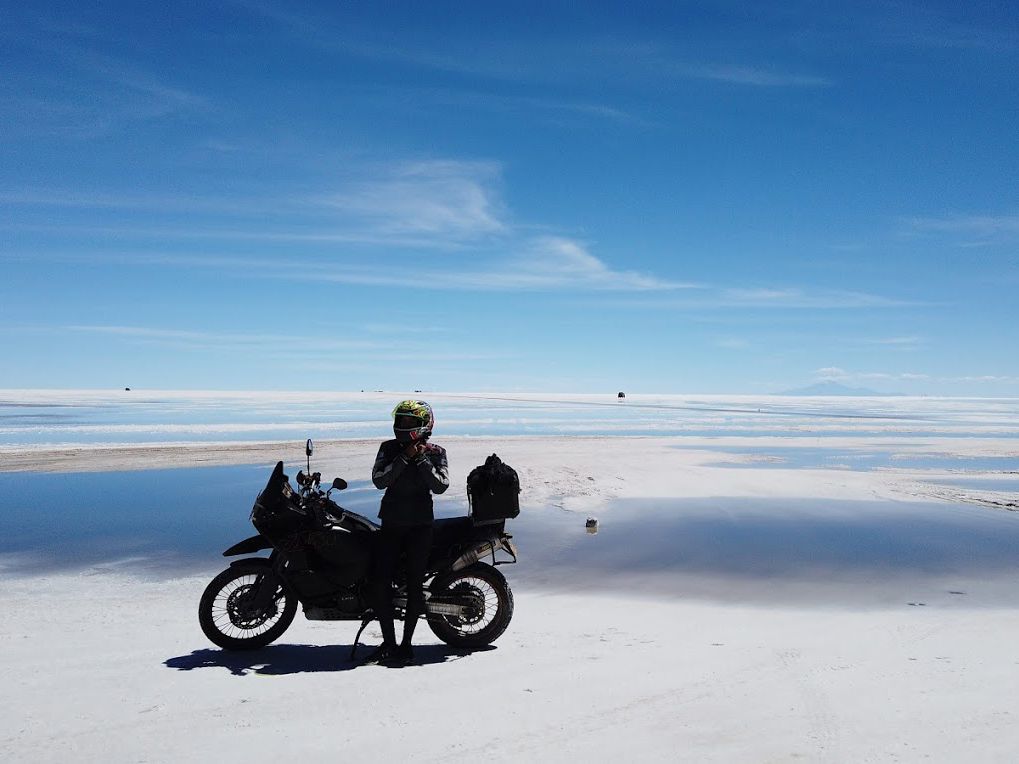
Hell-bent on making up lost time, Laurie became locked into the road, speeding ahead on his KTM 950. As they passed through a Martian-like red rock valley, a vast desert opened up and the sun began to melt on the horizon, casting long shadows. His fellow rider’s leisurely riding style was making him anxious, and the realization that they would miss a great deal of this epic scenery by riding in the dark began to sink in.
Dusty roads gave way to uneven dirt paths with deep, treacherous grooves of loose sand. After a particularly challenging corner, Laurie looked in his mirror to see the other couple’s bike enveloped in a cloud of dust. Riding back to help them on their feet, Laurie recalled the boyfriend expressing his dislike for riding off-road, and with tensions mounting, Laurie could see why: “His feet—essential for stabilizing on these dirt paths—seemed to barely touch the ground when he sat on his oversized BMW.”
“We continued, but they fell again. And again. This time it was serious. The girl clutched her ankle in immense pain, unable to hold back her tears. The three of us helped her off the bike and the decision was made that I would carry her from now on. My girlfriend, who knew only too well how to take a fall, would travel with our accident-prone friend. As the injured member of our group could not take another fall, I became her best chance of reaching a hospital.”
At both a literal and proverbial crossroads, they made the decision to split up. The injured girl had enough and her boyfriend didn’t trust himself to ride any further in the challenging terrain. Laurie and his girlfriend decide to go get help, perhaps a vehicle that could transport the injured girl out of the wilderness.
Related: Trapped Abroad On A Motorcycle Trip During Coronavirus
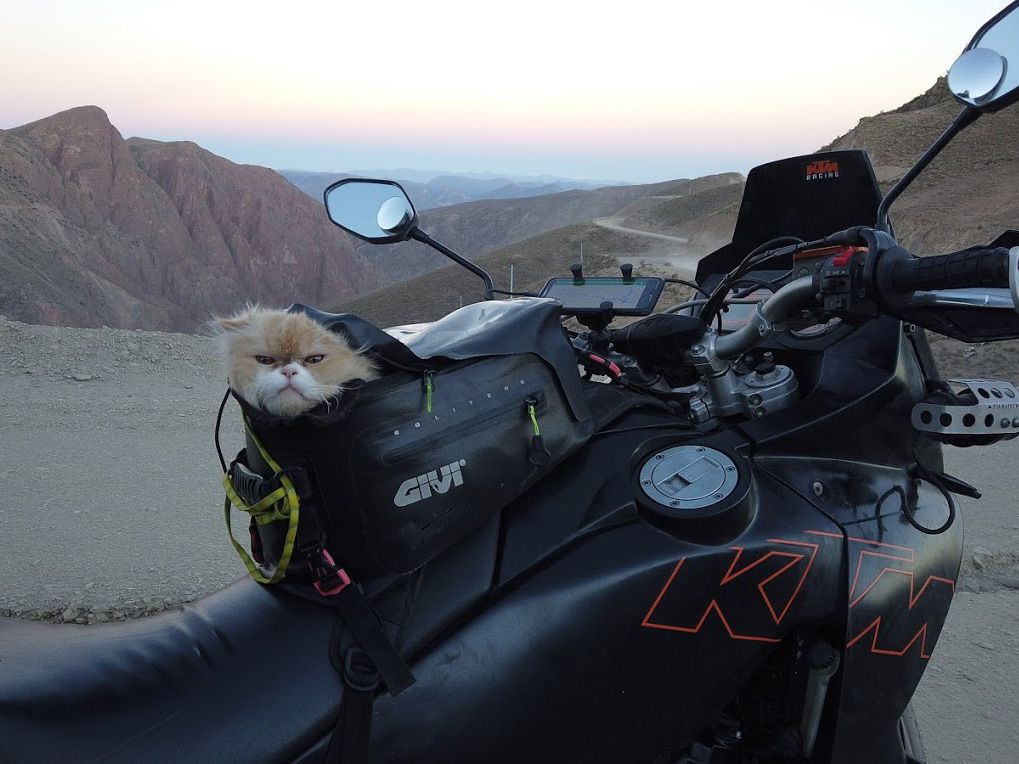
Retracing their sandy path in the moonlight, unsure if they had enough fuel to make it back to Uyuni, or even the several hours ride back to the edge of the national reserve to get medical help. Enveloped in darkness, riding toward a faint glow of light, not a single Bolivian local Laurie met was willing to assist, despite offering a cash incentive. It wasn’t until the morning that they were able to transport the girl out of the Ruta de las Lagunas, and the boyfriend followed on his BMW, with the luggage removed.
Laurie and his girlfriend rode back to Uyuni and stayed an extra night, needing mechanical assistance after the salt took its toll on the bike. The other couple got medical attention in the town and ended up having to stay for a couple of months while her ankle healed.
“In the end, we abandoned the route and took a less adventurous route into Argentina.”
Lessons learned.
TIP: Only embark on adventurous, extreme routes with trusted riders. Some have suggested rinsing the bike in diesel grease before heading out on the salt to prevent corrosion.
Related: How To Have A True Motorcycle Adventure In Ecuador
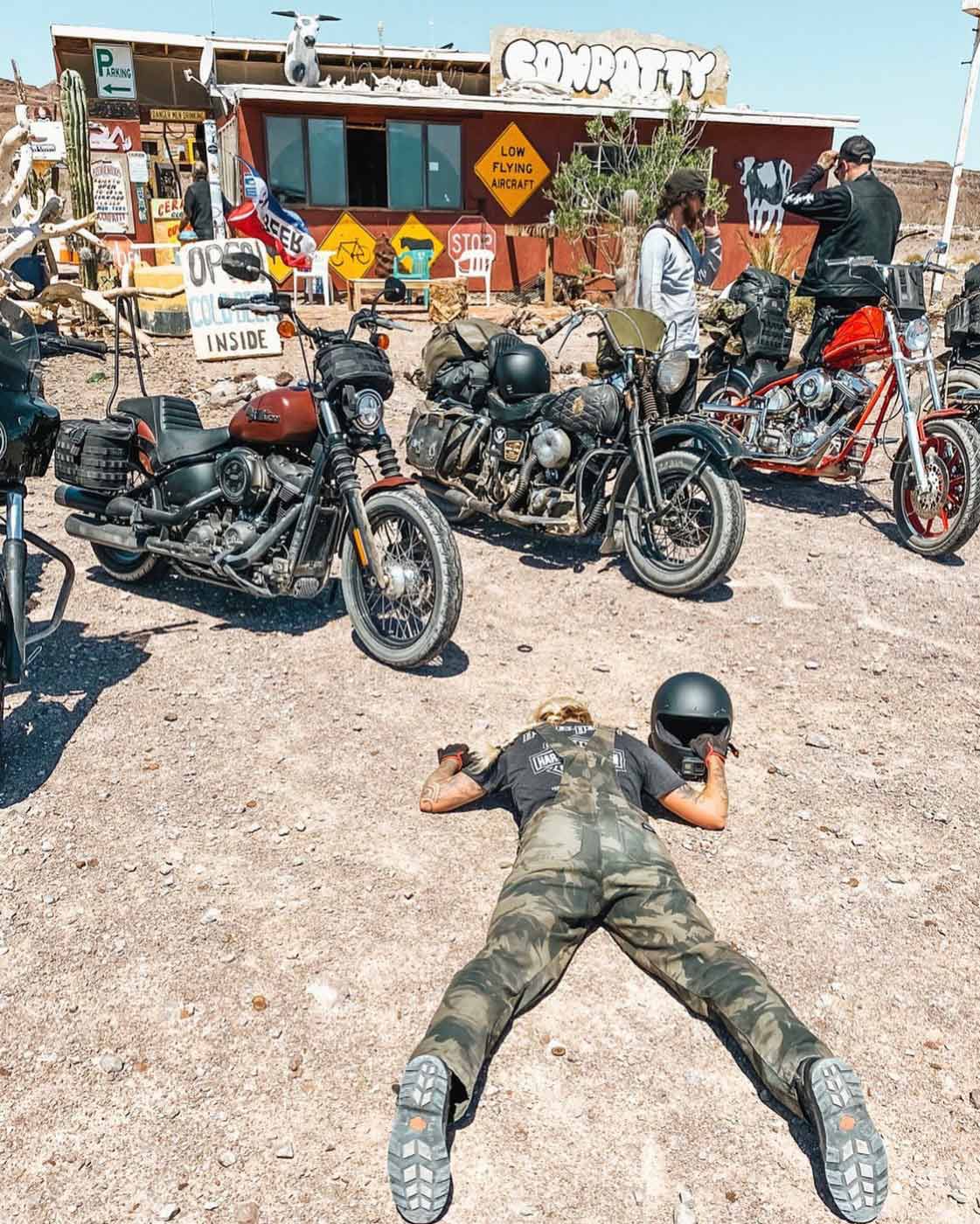
Rider Kalen Thorien Sums It Up
“All right, so this might be a bit cheesy or adventure-splainy, but years of misadventure have taught me one thing—the sun sets at the same time it should; the moon always rises when it should; the ebb and flow of the tides continue in their same pattern, so regardless of the struggle, eventually it will end and how we carry ourselves through those moments of tribulation is what defines not only the day, but our character. I’ve had plenty of travels where I’ve let the bad overwhelm me and go down that rabbit hole, only to find myself at camp regretting my reactions. It’s not easy. It takes practice. But when that moment of clarity hits and you can keep the switch from flipping to dark—you’ve found a new sense of freedom in your life.”
Motorcycle trips, with all their ups and downs, are a great reminder of this freedom and why so many of us continue to push our limits beyond the comforts we know and love.
Related: Adventure Riding An Indian Scout Sixty In The Jungles Of Peru
Source: MotorCyclistOnline.com
